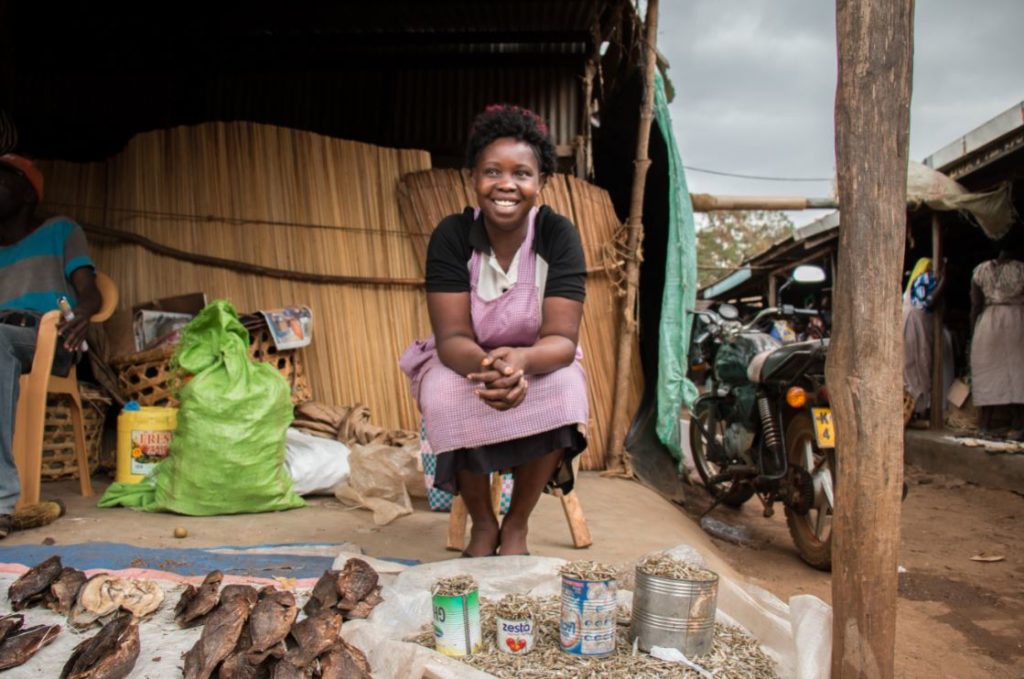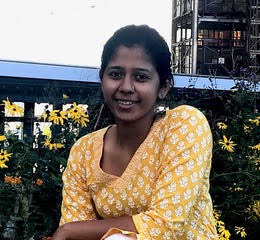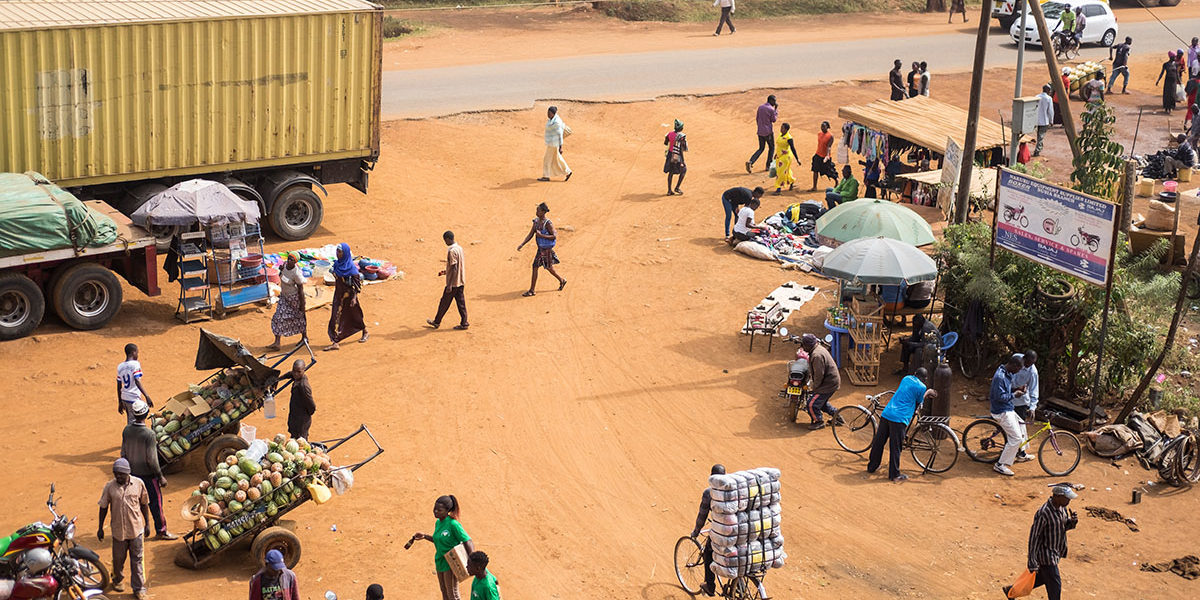“Women traders sometimes get raped close to Lake Victoria while trying to cross the border with their goods.” A female trade officer in the Busia County of Kenya mentioned this as a routine occurrence, while discussing challenges that small-scale women traders face when crossing the border from Kenya to Uganda.
In addition to being frequent victims of sextortion,¹ women, who make up the majority of total small-scale traders (Mbo’o-Tchouawou et al, 2016) are regularly subject to red tape and corruption² which may take various forms such as long lines to cross the border, bribes demanded by government officials at various points of a trader’s journey and constantly changing trade regulations. According to Kenya based tech platform, Sauti, survey research at the Busia and Malaba border crossings on the Kenya/Uganda border revealed that 56% of women traders reportedly experienced corruption daily, while 81% had experienced it at least once in a month (Ruiter, Hadley and Li, 2017). Women traders also indicated that police (47%) and revenue authority officials (18%) were the main instigators of harassment when crossing the border (Ruiter, Hadley and Li, 2017).
This is not to say that men don’t face corruption, but corruption in these forms severely inhibits women from carrying out their daily trade, puts them at a grave security risk, cuts into their profits and keeps women from growing their businesses. While many attempts have been made to reduce corruption at the borders, interventions seemed to have failed in helping women traders. A key reason for this failure can possibly be attributed to the lack of a gender lens in creating policies, combined with poor accountability mechanisms, putting vulnerable, small scale women traders at a greater risk of corruption.
Take for example the One Stop Border Post, the latest initiative by the government to ease cross-border trade. It aims to integrate cross-border processes of two different border posts (for example, Kenya and Uganda’s border posts) into one unified and simplified process. Three to four documents like a local stamped ID, a certificate of origin for the good, and an immunization card for yellow fever are required to cross the border.³ The trader then proceeds to customs where these documents and the goods are checked on just one side of the border post which the trader can enter the other country and carry out their trade. While the OSBP has helped reduce time at border crossings and has simplified procedures to some extent (Sui, 2019), women continue to face challenges, as many aspects of OSBP are not gender sensitive, starting from the first step of obtaining the correct documents.
Since women traders are less literate than male traders, they often don’t know which documents they need and how to get them. In a recent UNCTAD report, only 15.5% of the surveyed women traders had completed secondary school or more, while 11% had no schooling (Zarrilli et al, 2014). The lack of education, combined with gaps in knowledge regarding paperwork, leads to officials taking advantage of women traders by demanding small gifts or what is locally termed as “chai” in return for stamping or providing their documents, which are otherwise available for free. Given informal women traders depend on cross-border trade for their sustenance, these bribes are costly for them, steeply cutting into their already meagre profits4 .
Next, owing to poor access to finance, almost all women traders sell perishable (and low value) items like maize, fish and eggs among others whereas men trade more in non-perishable commodities (Zarrilli et al, 2014). Therefore, for women traders, standing in long lines at the sole One Stop Border Post in Busia county increases the chance of their commodities getting spoilt or going to waste, further reducing their profits.
The line to cross borders also presents a very lucrative chance for corruption as unofficial “express lines” operate at the border post as well. By paying a fee, a trader can jump to the start of the queue. Female traders, who are already financially constrained, may not be able to pay these fees.

Photo credit: Sauti
Next comes customs, where the border officials from the Kenya Plant Health Inspectorate Service, customs officers, Ministry of Agriculture representatives, Animal Industry and Fisheries officials, among others, check the quality of the products as well as verify the traders’ documents. Here, again, owing to greater information gaps among women, female traders may carry goods which are not up to the quality standards as determined by regulation4 or may not have all the requisite papers. Officials may again demand small payments from traders, to let them pass. According to the law, if the value of goods carried across the border is less than $2,000, then taxes do not have to be paid, but according to Aydiner-Avsar, Burak, and Quast (2016), only 59% of female traders were aware of this. Taking advantage of this lack of information, border officials may also charge false taxes, which they pocket as bribes.
At almost every juncture of the formal trading process, from obtaining documents to getting their goods verified at customs, women continue to face challenges. A study by Sui (2019) also revealed that women traders pay more informal payments per transaction as compared to male traders.
Given these circumstances, a majority of female traders actually choose to use informal borders, also known locally as panya routes (Mbo’o-Tchouawou et al, 2016). The informal border is rather porous and easy to cross in the absence of natural obstructions like mountains. These informal borders are also illegal. There are no customs officials nor police who are appointed to man them. No paperwork is required to cross and there are no lines to wait in. The quality of goods is not checked, neither are the traders prone to being duped for taxes. Therefore, many of the challenges that women face at the formal border are not present at the informal one.
What does not change at the informal border is corruption. Rather, the forms that it takes become much more severe. Even though policemen are not officially stationed at the informal border, they are usually present, as there is a lucrative opportunity to collect bribes. Since using the informal border is illegal, the police threaten formal action if traders don’t pay a bribe. While both men and women traders face bribery, over 30% of women also face sexual harassment at the hands of these policemen, especially if they don’t have money to pay the bribe( Global Integrity- ACE Report, 2019).
The examples of corruption cited above are not new and have also been noticed by the government, which has set up multiple mechanisms to mitigate corruption. These include hotline numbers that various ministries provide, a hotline number that the Ethic and Anti-Corruption Committee provides, county level offices where complaints can be registered, as well as a Non-Trade Barrier Tracker, which allows traders to register complaints. Our review of these mechanisms, through research and interviews, unfortunately revealed that they are not used or are defunct. The reason for this is two-fold – first is the lack of anonymity in registering complaints and second is the absence of accountability and monitoring.
For any action to be taken against a border official, proof of the corrupt act is required. Even if a trader has multiple options through which she can register a complaint, she would need proof – a photo, a recording or any other piece of evidence. Obtaining such proof is close to impossible, especially if it is a case of sexual harassment or rape. More importantly, providing such proof would put a small-scale trader’s work in jeopardy as her identity would be exposed while providing proof. Given the absence of anonymous whistleblowing mechanisms, any attempt to reduce corruption using existing channels is futile.
The lack of functioning accountability mechanisms has also allowed border officials and police to get away with corruption. Even though the Kenyan government has recently cracked down on officials, including the county governor of Busia (Al Jazeera report, 2018), most of their efforts are focused on macro issues like tax evasion and grand theft, rather than petty corruption. Corruption faced by small scale traders is not a priority and in the absence of political will to address this concern, it will continue to be a major challenge. The institutionalised nature of corruption may also add to its persistence. Some of our interviewees pointed that corrupt networks may also involve supervisors and senior officials, thus making corruption a part of the bureaucratic structure.
With gender insensitive formal border procedures, dangerous informal borders, ineffective complaint mechanisms and absent political will, women traders face an uphill task in ensuring their daily subsistence. The question that arises now is: What’s next? There are broadly three areas, that seem to target the root causes of corruption and are practically achievable in making it easier for women to trade across borders
- Increase advocacy on corruption and harassment:
As we saw from the challenges mentioned above, information asymmetry is a critical barrier that women small scale traders face. Presently, many civil society organisations and government entities have training sessions for traders on border crossing processes, documents required and Dos and Don’ts. Organisations like Sauti and Trademark East Africa (TMEA) have also created tech platforms where traders can access this information at minimal costs. Some organisations like TMEA have also been focusing on training women to stand up for their rights and providing gender sensitization training for border officials. As of now, traders using the Busia crossing, who are part of recognised trade associations, benefit the most, but those who are not part of associations or are in far off border towns are unfortunately left behind. Thus, there is a need to ensure that such interventions reach far and wide.
- Organise cross country policy dialogues to address key concerns of women traders:
Corruption that is present within the bureaucracy that implements cross-border trade cannot be weeded out without improved internal accountability. In an attempt to improve supervision, there has been increasing devolution of power to the county level, but this can be a double-edged sword as it may also increase corruption (D’Arcy and Cornell, 2016). There are also no set institutional mechanisms to counter corruption at the borders. Setting up internal accountability mechanisms will be difficult in the short run, but as a first step, relevant stakeholders such as traders, local government, ministries and anti-corruption authorities, among others, can be brought together, to discuss major challenges and possible solutions. In the past, policy dialogues on topics like drug trade and trade policy have been conducted at the country level with international actors such as the GIZ, USAID and the Ethics and Anti-Corruption Commission. The approach being recommended here is a policy dialogue at the county level, with a focus on women traders. Such a participatory approach would allow trader voices to be heard and also for co-creation of interventions which facilitate smooth cross-border trade for women.
- Create a strong lobby for gender sensitive policies:
Women’s trade associations have proven to be key in reducing information gaps among women traders, increasing access to microfinance and also building confidence among them. If the trader associations unite and become strong enough, they may also lobby the central government for institutional change such as more gender-sensitive border facilities, changing the rules for whistleblowing and prioritising the issue of corruption at the border. Organisations like TMEA and civil society organisations can also play a pivotal role in helping women traders join these associations, and also lobby for more gender sensitive cross-border trade policies.
These recommendations, by no means, are enough to uproot the corruption that women face in conducting cross-border trade in Kenya. The institutionalised nature of corruption has to also be simultaneously tackled from within the bureaucracy and government. Therefore, in the short run, the ideas mentioned above provide a means to at least bring the conversation on corruption and harassment faced by women traders to the fore and may help empower women to stand up for their rights and eventually help create an ecosystem where they can move beyond sustenance towards economic prosperity.
Learn more by reading the detailed report by Columbia University’s School of International and Public Affairs graduate students or other blog posts here. To learn about how COVID-19 has impacted small-scale, women traders click here. This project is part of the Earth Institute/ Busara’s Ethical Border Trading Project.
¹ Sextortion refers to the abuse of power to obtain a sexual benefit or advantage. https://images.transparencycdn.org/images/2020_Report_BreakingSilenceAroundSextortion_English.pdf
² The definition of corruption used here is “the abuse of public office for private gain” “What Is Corruption?” Transparency.org. Accessed July 8, 2020. https://www.transparency.org/en/what-is-corruption.
³ Based on information obtained through interviews.
4 Data from the Sauti website which regularly collects information on trader demographics and business behavior.
5 For example, some agricultural products need to be dried before they can be taken across the border. Sometimes, traders may carry goods which are not completely dry, and therefore, their goods may be held back at customs.
Bibliography
Mbo’o-Tchouawou, Michèle, Joseph Karugia, Leonard Mulei, and Hannah Nyota. “Assessing the Participation of Men and Women in Cross-Border Trade in Agriculture: Evidence from Selected East African Countries.” Resakss.org, December 2016. https://www.resakss.org/sites/default/files/Gender_and_Trade_Final_Version-38.pdf.
Ruiter, Chelsea, Hadley, Lance, and Li Queena, “Impacts of Non-Tariff Barriers for Women Small Scale Cross-Border Traders on the Kenya-Uganda Border”, 2017
Sui, J. (2019). Trade costs, trade facilitation and formalisation of trade: Evidence from One-Stop-Border-Posts in Uganda (Working paper). Retrieved August 3, 2020, from https://www.theigc.org/wp-content/uploads/2019/07/Siu-2019-Working-paper.pdf
Zarrilli, Simonetta, Irene Musselli, Elizabeth Jane Casabianca, Marzia Fontana, Mariangela Linoci, and Sheba Tejani. Rep. Virtual Institute Teaching Material on Trade and Gender. Volume 1: Unfolding the Links. UNCTAD, 2014. https://unctad.org/en/PublicationsLibrary/gds2014d1_en.pdf.
Aydiner-Avsar, Nursel, Burak Onemli, and Bastiaan Quast. Rep. East African Community Regional Integration: Trade and Gender Implications. UNCTAD, 2016. https://unctad.org/en/PublicationsLibrary/ditc2017d2_en.pdf.
“Contextualization Study of Small-Scale Traders at the Kenya-Uganda Borders”, Global Integrity- ACE Report, 2019
Al Jazeera. “Kenya: Busia County Governor Arrested on Corruption Charges,” July 4, 2018. https://www.aljazeera.com/news/2018/07/kenya-busia-county-governor-arrested-corruption-charges-180704084351276.html.
D’Arcy, M., & Cornell, A. (2016). Devolution and Corruption in Kenya: Everyone’s Turn To Eat? African Affairs, 115(459), 246-273. DOI: 10.1093/afraf/adw002

Shruti is a 2020 MPA graduate from the School of International and Public Affairs, Columbia University. She is currently volunteering with Indus Action in India, where she is working in the governance reform space to improve public service delivery.

